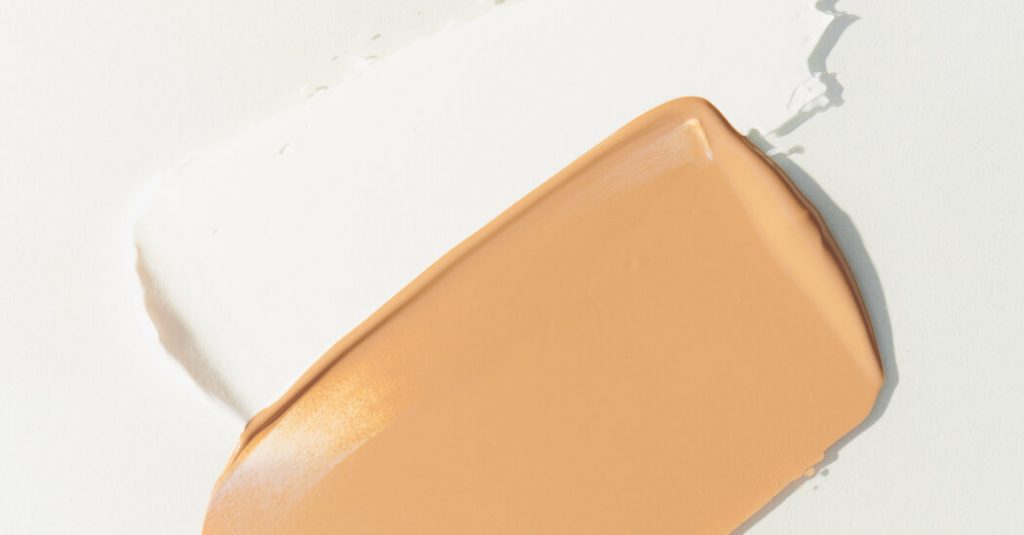
Is Makeup Messing Up My Sunscreen?
Q: I wear a full face of makeup on top of a layer of sunscreen each day. Does that diminish my protection from UV rays?
The key to reducing your risk of skin cancer, sun spots and wrinkles from sun damage is to incorporate sunscreen into your daily routine, and to apply it — and reapply it — correctly.
Luckily, when it comes to wearing makeup and sunscreen together, there is some good news, said Dr. Nikhil Dhingra, a dermatologist at Spring Street Dermatology in New York City: No matter how much foundation, concealer, blush or highlighter you apply during your makeup routine, you’ll still be protected from the sun — as long as you follow a few simple steps.
Apply products in the correct order
One important way to ensure that you’re truly protected from harmful UV rays is to apply your sunscreen as the last step in your morning skin care routine, but before you begin applying any makeup.
Chemical sunscreens contain filters that sink into the skin and absorb UV light, whereas physical (or mineral) sunscreens sit on top of the skin and scatter UV light. Because of these processes, sunscreen is most effective when applied directly to clean skin.
After you wash your face in the morning and apply any skin care products, like toners, serums, moisturizers or oils, slather on your sunscreen. Dermatologists recommend using a minimum sun protection factor of 30.
Wear enough sunscreen
Studies have found that people generally don’t use enough sunscreen for adequate protection. Most only apply a quarter of the amount that they need for their entire body, said Dr. Amanda Doyle, a dermatologist at the Russak Dermatology Clinic in New York City. You need about two milligrams of sunscreen per square centimeter of skin to achieve the advertised SPF, according to the Skin Cancer Foundation.
Because everyone is different, this could mean more or less sunscreen depending on the size of your face. To make application a little easier, Tiara Willis, a New York-based aesthetician, recommends the two-finger rule (lining the length of your middle and index finger with sunscreen) to measure an ample amount of sunscreen for your face and neck.
Let it set
Before applying any makeup on top of your sunscreen, give it at least two minutes to sink into the skin. Avoid touching your face during this time. Dr. Kiran Mian, a dermatologist at Hudson Dermatology & Laser Surgery in New York City, said that adding makeup too soon could dilute your sunscreen or interact with the ingredients, rendering them ineffective.
Think of putting on sunscreen like painting a room: Apply it in an even, thick coat, then give it enough time to dry before touching or decorating it. Dr. Mian suggested doing something like brushing your eyebrows after applying sunscreen to keep yourself busy in the interim. If your sunscreen base is properly dried and set, the ingredients in your makeup shouldn’t negatively affect its SPF.
Don’t rely on foundation with SPF
Many foundations, beauty balms and color-correcting creams contain sunscreen, which can seem like a convenient way to protect your skin without compromising your makeup routine. However, makeup with SPF is not sufficient as your sole sunscreen option because you’d need to use a lot of it — more than most people typically use for their everyday looks — to effectively protect your skin.
Of course, it doesn’t hurt to have added SPF from your makeup, because, when it comes to sunscreen, more is more. One study published in 2021 even concluded that layering makeup over sunscreen boosted total sun protection. This is because all makeup, even products that don’t have built-in SPF, contains filters similar to those found in physical sunscreens, which can provide added protection if your sunscreen base layer isn’t sufficient.
Reapply sunscreen regularly
Sunscreen should be reapplied every two hours, or after swimming or sweating. Even sitting near a window while you work requires reapplication, because glass does not significantly block UVA or UVB rays. Usually, reapplication is as simple as smearing on another coat of sunscreen, but it can be trickier when you’re wearing makeup.
The somewhat disappointing news: There aren’t enough studies to prove just how effective SPF reapplication on top of makeup is. And there’s reason to think it’s not ideal, because we know that sunscreen is most effective when applied as close to the skin as possible and because it’s challenging to apply enough sunscreen over makeup to be sufficiently protective. Powder sunscreens, for example, are an enticing option for reapplication because of their portability and utility as a quick touch-up tool, but in reality, said Dr. Cula Svidzinski, the medical director of the Skin of Color Center at Mount Sinai Medical Center, you’d need to apply about a teaspoon of powder sunscreen on your face to reach the advertised SPF.
SPF setting sprays, and spray sunscreens in general, are appealing for their easy application, but the truth is that they still need to be rubbed into the skin to provide adequate coverage from the sun, which negates the presumed convenience.
Also, keep in mind that SPF is not cumulative. “If your sunscreen is SPF 30, and then you apply an SPF 15 moisturizer, you don’t have SPF 45 protection,” Dr. Mian said.
So, what should you do? Experts say that you should use any method that will encourage you to reapply your sunscreen, so long as you understand that you probably won’t be getting the full advertised SPF. Whether you reapply with a powder sunscreen, drown your face in an SPF setting spray or squirt sunscreen lotion onto the back of your hand and pat it on over your makeup, even a small SPF boost is better than nothing, the experts said.
Caira Blackwell is a staff writer at Wirecutter who covers health and sleep. Her work has previously been published in Okayplayer, The Knockturnal and Nylon magazine.